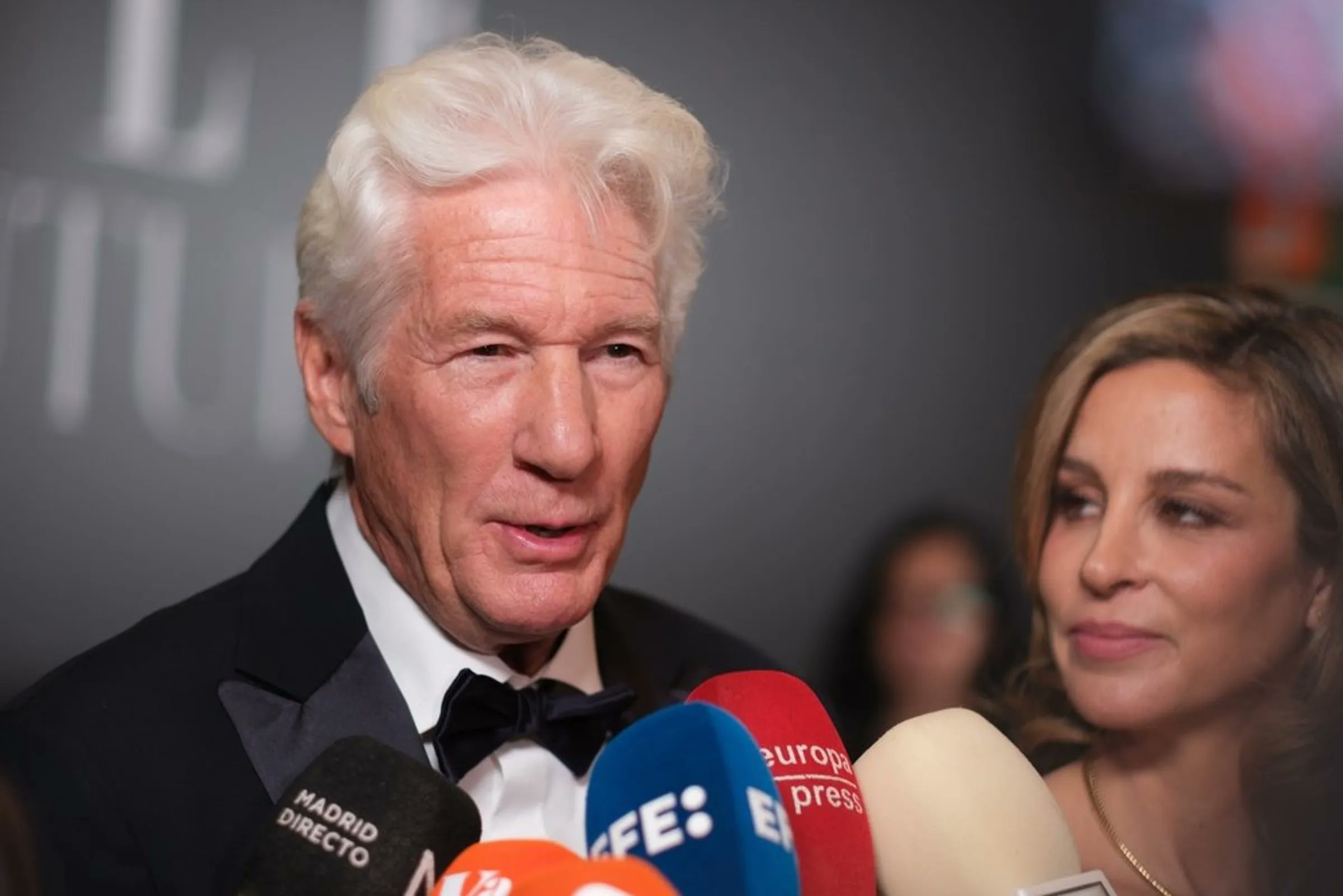
Actor Richard Gere Just called President Donald Trump a “bully” and a “thug” in Spain. “We’re in a very dark place in America, where we have a bully, a thug, who’s the president of the United States,” Gere was quoted as saying

Actor Richard Gere Just called President Donald Trump a “bully” and a “thug” in Spain. “We’re in a very dark place in America, where we have a bully, a thug, who’s the president of the United States,” Gere was quoted as saying
A recently rediscovered painting by 19th-century Ottoman painter Osman Hamdi Bey sold for £1 million ($1.3 million) at a London auction Tuesday, drawing strong interest from collectors and institutions.
Preparing Coffee, from 1881, resurfaced after more than a century in private European collections, known until recently only from a black-and-white photograph taken in the same year by renowned photographers Jean Pascal Sebah and Policarpe Joaillier.
The sale made it the highest-valued lot in an auction that saw 50 artworks sold in rapid succession.
It was acquired by an anonymous buyer through a phone bid.
First acquired around 1910 by Prince Sadiq Yadigarov, an art collector from Georgia, it passed to his son Archil, and then, around 1930, to a private collector in Vienna — related to Archil by marriage — where it remained by descent until 2008.
Since then, it has been held in another Austrian private collection until its recent emergence.
Set within a richly tiled, colonnaded interior — perhaps an imagined harem complex in Istanbul’s Topkapi Palace — it depicts two young women preparing a ritual coffee.
The setting is fictional but constructed with exquisite attention to detail, a “sumptuous and jewel-like impression of luxe,” as Sotheby’s catalogue describes it.
Born into an elite Ottoman family, Hamdi Bey was sent to Paris in the early 1860s to study law but instead found his calling in painting and archaeology.
By adopting Western artistic technique to depict Eastern subjects, Hamdi Bey not only responded to the growing 19th-century market for Orientalist art but also used his deep understanding of Muslim culture to create nuanced, respectful portrayals of Ottoman life according to Anadolu.
As Israel’s continues its devastating war and relentless humanitarian blockade, the ancient Gaza Strip – once a radiant Mediterranean hub of commerce, culture, and religious coexistence – now faces a deeper erasure: not just from maps, but from the world’s collective memory.
A new exhibition at the Institut du Monde Arabe in Paris, titled ‘Gaza’s Saved Treasures: 5,000 Years of History,’ seeks to resist that disappearance. Running from April to November this year, the show presents around 100 archaeological masterpieces that illuminate Gaza’s extraordinary legacy as a crossroads of civilizations – from the Bronze Age to modern times.
The exhibition is both a celebration and a lament: a tribute to Gaza’s millennia-old cultural wealth, and a sober reckoning with what has been lost to Israel’s deadly occupation.
Gaza’s strategic location has always made it a coveted prize for empires – Egyptian, Persian, Roman, and Ottoman – but it was also a channel for connection, where cultures and religions converged.
The exhibit – with amphorae, oil lamps, coins, statuettes, and mosaics on display – tells the story of Gaza as a vital Mediterranean port and cultural meeting point.
Its history – shaped by Canaanite, Egyptian, Philistine, Neo-Assyrian, Babylonian, Persian, Greek, Roman, Byzantine, Islamic, and Crusader influences – reveals a city that flourished at the heart of ancient trade and intellectual exchange.
Among the most striking items is a dazzling Byzantine mosaic from Jabaliya, part of an ecclesiastical complex reflecting Gaza’s early Christian heritage.
Nearby, amphorae once used in the wine trade testify to the city’s crucial role in Mediterranean commerce, while figurines blend Egyptian motifs with Hellenistic gods, echoing a world of syncretism and porous cultural boundaries.
Race against oblivion
Since the start of Israel’s war on Gaza in October 2023, the territory’s cultural heritage has suffered catastrophic damage.
According to UNESCO, nearly 70 cultural sites have been destroyed or severely damaged, including the historic Greek Orthodox Church of Saint Porphyry – one of the oldest active churches in the world.
Where once stood mosaics, temples, and centuries-old tombs, there are now craters and rubble due to Israel’s ongoing bombardment. In this context, the exhibition in Paris becomes something urgent and defiant: a safeguard for memory, a museum in exile.
Much of the exhibition’s content is drawn from a trove of over 500 artifacts housed since 2007 at Geneva’s Museum of Art and History, entrusted to Switzerland by the Palestinian National Authority for safekeeping.
Many of the works stem from Franco-Palestinian excavations launched in 1995, supplemented by pieces from private collections – some of which are being shown publicly for the first time.
The curators have taken care not to separate Gaza’s ancient grandeur from the present-day suffering inflicted by Israel.
One dedicated section of the exhibition uses satellite imagery and field reports to map the devastation inflicted on cultural heritage since 2023.
French, Swiss, and Palestinian scholars have contributed rare documentation – including early 20th-century photographs of Gaza – that provide a visual archive of what once was and what may never return.
The exhibition makes no attempt to hide the political context. It explicitly refers to the destruction as part of “Israel’s brutal genocide,” anchoring the cultural annihilation in a broader system of occupation, blockade, and war.
By doing so, the Paris exhibition challenges the silence often surrounding cultural loss in war zones, raising questions about the responsibilities of international institutions and the politics of preservation as reported in Anadolu.